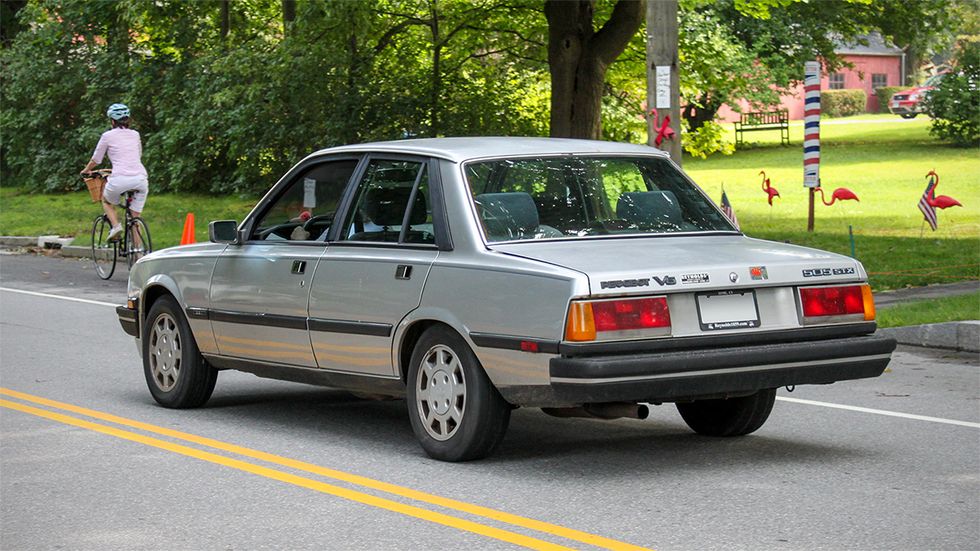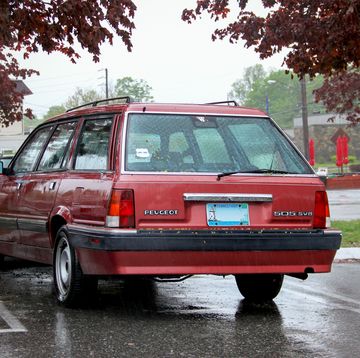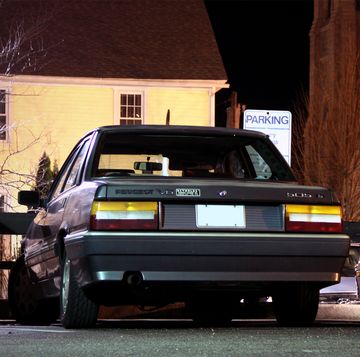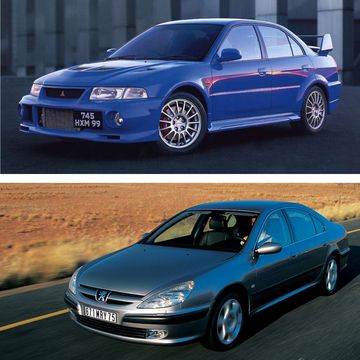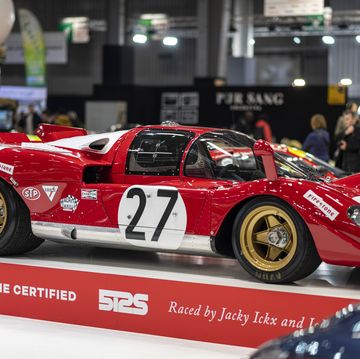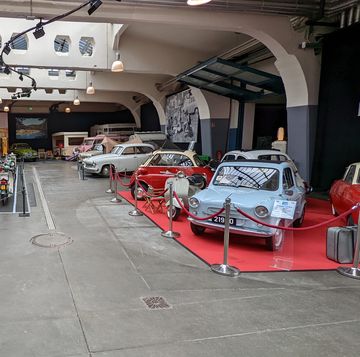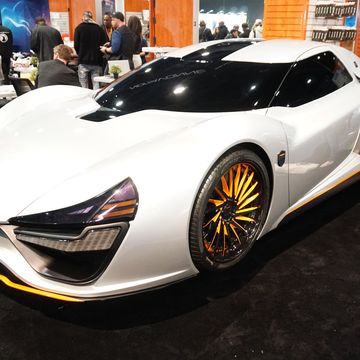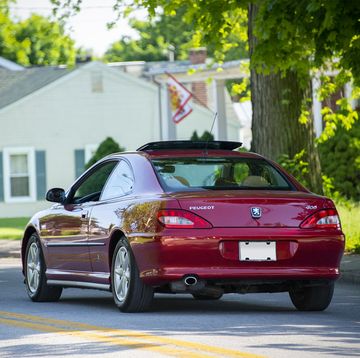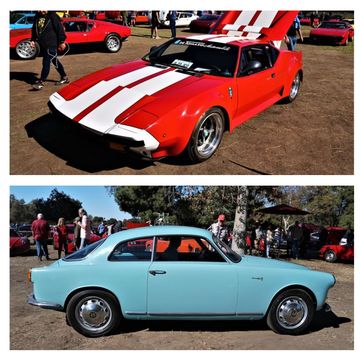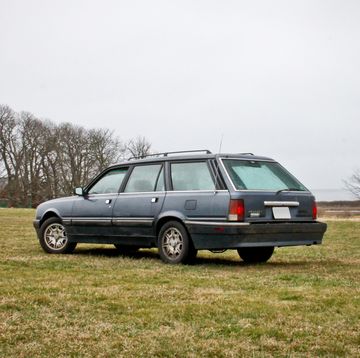There were plenty of European sedans you could get with a six-cylinder engine in the late 1980s, but odds are you've probably forgotten about this one. That's right: the Sochaux-built 505 joined the ranks of Mercedes-Benz, Volvo, BMW, Renault and even Alfa Romeo in offering a six-cylinder engine in a plush sedan marketed to Americans. And after all, the P in PRV stands for Peugeot.
But how many of these are still around today as daily drivers? That number can't be high, even though a Volvo 760 of the same vintage with a PRV V6 probably won't turn too many heads.
The 505, if you recall, became the sole Peugeot sedan on sale in the second half of the 1980s after the departure of the 504 and 604, the latter of which had turned out to be a bit of a dud in the States while the former was single-handedly responsible for almost all stateside Peugeot sales in the 1970s. Combining a chiseled Pininfarina exterior with a lively chassis the 505 sedan had a lot going for it when it landed stateside in 1980, offering plenty of competition to Volvo, Saab and even the Germans. At launch the 505 had quad DOT sealed beams, but traded them a few years later for two rectangular units that fit its front fascia a little better.
The sedan and wagon duo also debuted during an era that's largely taken for granted now, but is usually referred to in automotive circles as Late Malaise: the early Reagan years when gas shortages were still an issue, and when diesel passenger cars were much more common. In a relatively short period of time gas prices dropped, making diesel Oldsmobiles and Cadillacs irrelevant almost overnight, as larger-displacement gas engines came back into vogue. The 505 itself had been offered in turbodiesel form and also with a four-cylinder gas engine, which later gained a turbo and became a bit of a secret menu item that actually justified the German sedan price, at least to some.
If you wanted to spend big on a 505 your choices were the Turbo, with a 2,155-CID inline-four pumping out 180 hp, or the PRV V6 with 145 hp and 173 lb-ft of torque on tap. Both were expensive for the time, with the V6 landing just shy of $25,000 in 1986 with some options, but they did offer plenty of go for the American-sized 505. With a fully-independent suspension with anti-roll bars front and back, the 505 was also quick on its feet, offering none of the body roll of contemporary American sedans.
The success of the 505 also turned out to be a bit of a trap for Peugeot in the U.S. in the 1980s, as the sedan and wagon duo were tasked with carrying the entire brand. The automaker chose not to offer the excellent 205 hatch stateside, and kept cheaper models like the 305 away from our shores. With just the 505 sedan and wagon, as capable as they were, Peugeot staked quite a bit on their success, as long as they stayed in production. The 405 sedan and wagon arrived by the end of the decade but recorded disturbingly tiny sales, and as the 505 exited production Peugeot dealers didn't have a large and plush model, or much variety at all, to offer U.S. buyers, despite the fact that the pricey 605 was also in production by that point in time. The 505 was also a bit dated when it left our shores, while the competition surged ahead.
Half a decade after leaving, Peugeot felt that the 406 sedan and wagon could replicate the success of the 505 duo, and even sent a few demo cars to its former dealers in the U.S. to test out with buyers. But by that time the ship had sailed, and American buyers wanted SUVs, which Peugeot would not have for a long time.
Have you seen a 505 sedan or wagon in traffic lately? Let us know in the comments below.

Jay Ramey grew up around very strange European cars, and instead of seeking out something reliable and comfortable for his own personal use he has been drawn to the more adventurous side of the dependability spectrum. Despite being followed around by French cars for the past decade, he has somehow been able to avoid Citroën ownership, judging them too commonplace, and is currently looking at cars from the former Czechoslovakia. Jay has been with Autoweek since 2013.

